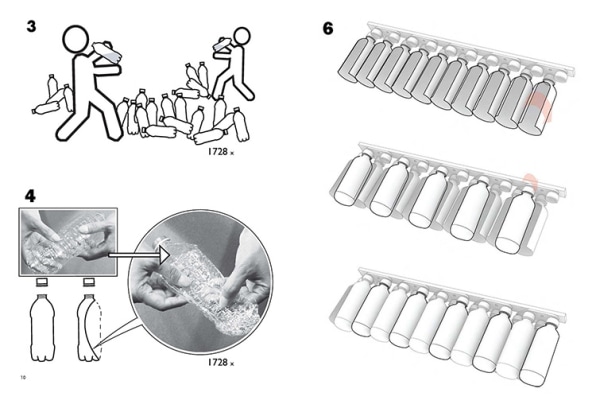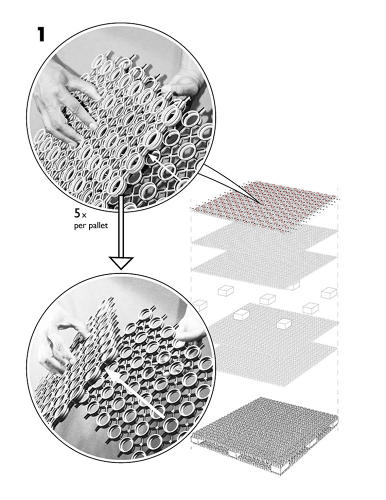How Does Water Get To My House Diagram
When a disaster like Typhoon Haiyan strikes, one of the first supplies relief agencies send is bottled water. Now, a group of architects want to take the empty plastic bottles–and the pallets they're delivered on–and turn them into upcycled disaster housing.
Using a custom plastic pallet as the base, the Home2O makes a roof from crushed bottles that screw into bottle-sized holes. Each bottle layers on top of the last one, like Spanish tiles, until the roof is fully covered and weatherproof.

The designers hope that the specially designed pallet can become standard. "We want to intervene far upstream and invent an alternative shipping pallet for the beverage industry," says Jason Van Nest, an assistant professor at New York Institute of Technology's School of Architecture and Design, who is leading the project along with fellow professor Farzana Gandhi. "Our hope is that it would get into regular circulation, and then eventually turn into housing."
A typical wooden pallet lasts for about eight trips, while plastic pallets last around 60 trips–so the team hopes that beverage companies will find their pallets more affordable, and then eventually donate them. "When disaster did strike, a warehouse manager would just choose one of our more beaten-up pallets with which to deliver water bottles for relief, and consider that a tax write-off," Van Nest says.
As someone starts building the roof, it can be lashed to any type of structure. "Disasters happen all over the world and local craftsmen all have different building traditions," Van Nest says. "We're trying to develop a relief system that delivers critically needed water, but turns into another resource to plug into local knowledge and local expertise. The pallet could be broken apart and lashed to bamboo structures, earth structures, or even lumber structures made from disaster materials like 2x4s that have been strewn to the side." The roof can be attached without any nails, screws, or tools.

When someone's ready to move out of their temporary house, they can recycle their old roof. As Van Nest explains, "You can just unscrew the bottles and toss them in a bin," and the pallet parts will be recyclable as well, following the lead of plastic-pallet providers like iGPS.
After two years of development, the team has a patent for the pallet design, and is about to start building a proof of concept shelter. They're on Kickstarter now to raise funding to build more prototypes, so they can demonstrate how the system would work with different types of houses. They'll also be filming everything to show how easily the pallets can be deconstructed to form a roof. Soon, they hope to bring the design out into the real world.
The team thinks the design can help give disaster victims not only shelter, but a small sense of control in the middle of chaos.
"This is for people who are literally in their house one day, and the next day have nothing," said Van Nest. "We had students who went to Haiti and saw helplessness and despair everywhere because there was nothing people could do." As people build their own temporary homes, he says, they can feel some sense of empowerment. "Part of the intent is to give new resources for people to make use of their faculties in a way that's as helpful psychologically as food, water, and shelter are physically."
How Does Water Get To My House Diagram
Source: https://www.fastcompany.com/3021844/upcycled-disaster-housing-made-of-disaster-relief-water-bottles
Posted by: decarloelows1972.blogspot.com

0 Response to "How Does Water Get To My House Diagram"
Post a Comment